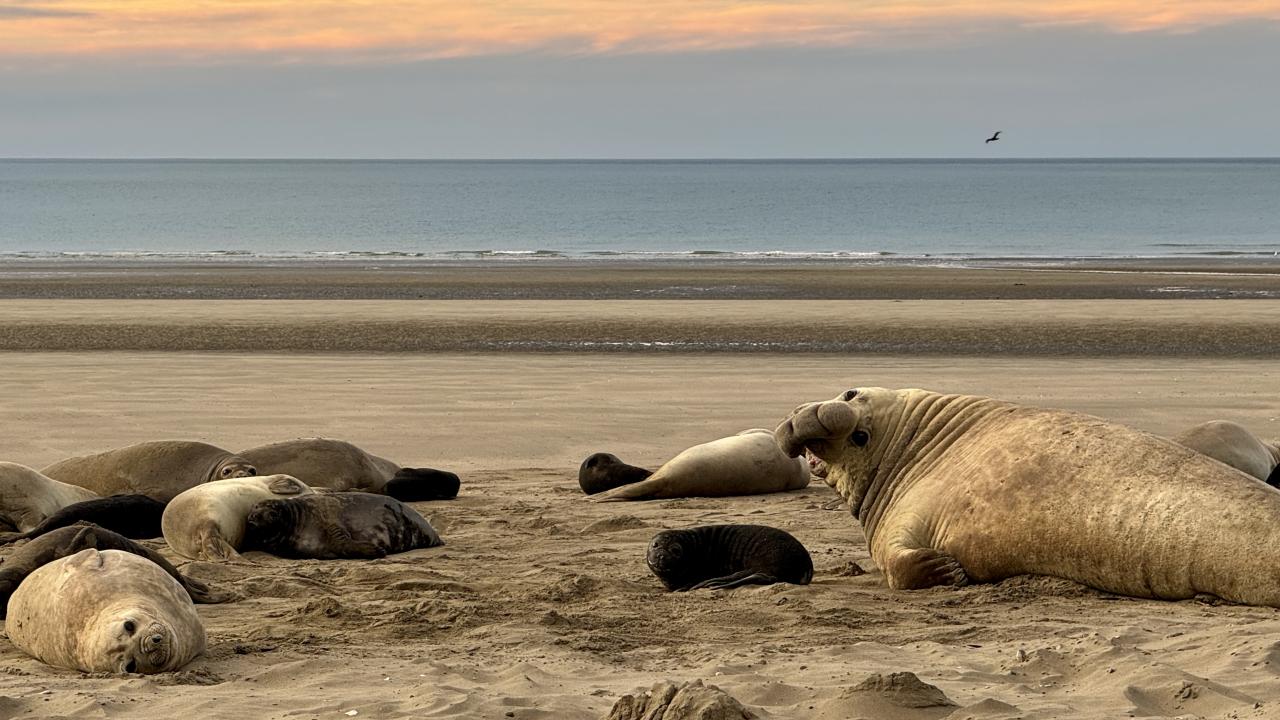
Avian influenza is a devastating setback for the Patagonian elephant seal population
It may take a century before a southern elephant seal colony, hit by an epidemic, comes back to original numbers, according to a new study published by WCS Argentina, CONICET and the University of California, Davis.
New York, April 16, 2025-- It may take 100 years for the southern elephant seal colony of Península Valdés in Argentine Patagonia to look like it did in 2022. A study published in Marine Mammal Science has projected population trajectories after the 2023 epidemic of the High Pathogenicity Avian Influenza H5N1 virus, which killed almost all newborn pups and an unknown number of adults.
Had the episode killed only pups, the future population could recover to 2022 levels (18,000 adult females) as soon as 2029, and as late as 2051. This is because natural mortality is always high at the early stages of life for the species. But if the disease had mainly impacted a significant part of the reproductive female population, the expected year of recovery would be 2091.
There are even worse possible scenarios, such as when female mortality is combined with lost reproductive opportunities due to adult male mortality, or when the epidemic repeats and kills seals that are susceptible. In the worst cases, the population would not look like that of 2022 until the mid-22nd century.
The first real-world test of the hypothetical scenarios occurred during the 2024 breeding season. Counts yielded support to scenarios of high adult mortality, with 67% fewer reproductive females at beaches that had typically been the most densely populated of the entire colony (6,938 females in 2022 vs. 2,256 in 2024). Differences could be attributed to mortality, a delay in the arrival of animals, animals that skipped a season, or a redistribution and colonization of new places. Yet, data for the molting season strongly suggest that adult mortality explains the results.
So far, evidence suggests that the viral episode significantly impacted adult individuals, reversing the conservation status of a population previously having no significant threats to stable growth. It demonstrates how in just a few weeks, the future of the population mutated from no conservation concern to quite vulnerable and uncertain. The risk of infectious diseases impacting natural populations could increase with the worsening of climate change.
Said Valeria Falabella, WCS Argentina director of coastal-marine conservation and co-author of the study: "With decades of growth, the southern elephant seal of Península Valdes was a healthy population and a protagonist of amazing natural spectacles. Until the avian flu of 2023 left thousands of dead calves and our eyes in tears. The continuous monitoring carried out by WCS Argentina and CONICET allows us to measure the impact, and now more than ever we will need the support of our donors to continue monitoring this and other sentinel species of the integrity of our coastal and marine ecosystems."
Dr. Marcela Uhart, director of the Latin America program at the University of California, Davis, and co-author of this study, noted that “Avian influenza has starkly demonstrated the devastating impact that infectious diseases can have on wildlife populations. These effects are likely to intensify under current and projected climate change conditions. It is imperative that we significantly strengthen our upstream prevention efforts to mitigate future risks.”
Dr. Claudio Campagna, WCS Argentina senior advisor and also co-author of the study, pointed that "only resilient populations with healthy numbers and ample distribution may survive these threats and remain safe from most of the many causes of mortality associated with human activities, such as high-impact fisheries, large-scale agriculture and mining, and pollution. Yet, the more global warming and ocean acidification are out of control, the worse for biodiversity in general, making epidemics a path toward potential extinctions."
These scenarios are supported by decades of demographic and animal health data gathered by researchers from the Wildlife Conservation Society Argentina (WCS Argentina), the National Research Council of Argentina (CONICET) and the University of California, Davis, supported by the Liz Claiborne and Art Ortenberg Foundation, a key donor for monitoring coastal-marine species in Patagonia.
Media Resources
Media Contact
- Mary Dixon, WCS, mdixon@wcs.org
- Debora Mazzola, WCS Argentina, dmazzola@wcs.org
